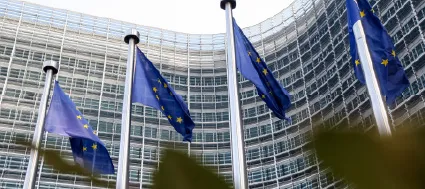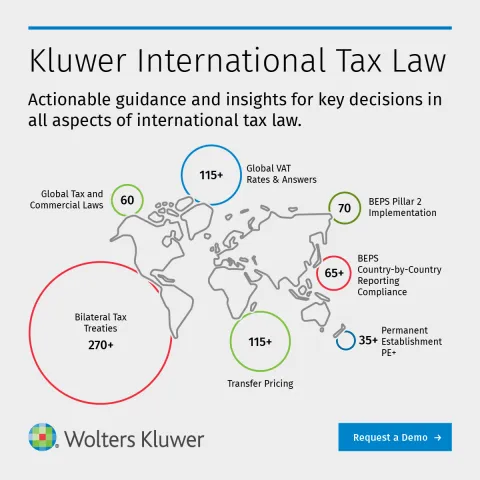A full carve-out for U.S. groups for Pillar 2: an EU Constitutional Trojan Horse?
October 6, 2025
1. Introduction
The global minimum tax (Pillar Two) was implemented in the European Union in December 2022 through Directive (EU) 2022/25231. At its core lies a system of “top-up tax” whereby the profits of multinational groups taxed below 15% are subject to a supplementary levy through an Income Inclusion Rule (IIR) or an Undertaxed Profits Rule (UTPR)2.
We see now that a seemingly technical provision of the Directive, Article 32, may evolve into a constitutional flashpoint. The article stipulates that the top-up tax in a jurisdiction shall be set to zero where the group is covered by a ‘qualifying international agreement on safe harbours”3.
The question now is whether Article 32 could serve as a legal basis to justify a full carve-out for U.S. groups, as envisaged in the G7 statement of 28 June 20254. If so, Article 32 may transform from a technocratic tool into a constitutional Trojan horse.
2. Article 32: rationale and wording
Article 32 was designed as a tool for administrative simplification. Safe harbours are temporary or simplified methods intended to avoid disproportionate compliance costs and burdens for taxpayers and tax administrations5. Examples include the OECD’s CbCR safe harbour and the QDMTT safe harbour6.
The rationale is straightforward: as long as a group can demonstrate, based on proxy indicators, that its effective tax rate is above a certain threshold, it need not undertake a full GloBE computation. In other words, Article 32 is about technical risk assessment rather than structural exemption.
3. The side-by-side proposal and Member State doubts
The G7 statement of June 2025 declared that the United States could continue to apply its own minimum tax (CAMT) “side-by-side” with the international regime. In exchange, U.S. multinationals would be fully exempt from the EU IIR and UTPR7.
This approach was discussed at the High Level Working Party on Tax Questions of the EU Council on 24 September 2025. Reports indicate that nine Member States questioned whether such a system could be implemented under Article 328. Their concerns were threefold:
- The wording of Article 32 refers to a qualifying international safe harbour agreement, not to broad carve-outs by jurisdiction of residence.
- The mechanism was intended as an administrative simplification, not a political exemption.
- A broad reading could be legally vulnerable and inconsistent with the Directive’s overall logic9.
Some Member States suggested placing the issue on the agenda of the ECOFIN Council, but this was deemed “premature.” Nonetheless, the discussion shows that the legal interpretation of Article 32 is already seen as problematic in Brussels.
4. From administrative exception to constitutional Trojan horse
If Article 32 were to be deployed as a legal hook to justify the side-by-side carve-out, the consequences would extend far beyond tax policy.
- Acceptance of soft law as binding
Article 32 ties the operation of EU law to future agreements negotiated in the OECD/G7. This effectively grants binding legal effect within the Union to soft law developed outside the EU’s constitutional framework. - The EU as mere ratifier
Instead of exercising autonomous legislative choice, the EU would ex ante accept that global “club agreements” automatically bind the Union. The EU legislature risks becoming a rubber-stamp ratifier of international deals. - Towards a hybrid constitutional order
Article 32 thereby creates a hybrid fiscal constitution in which international arrangements enjoy de facto primacy over EU legislation, undermining the autonomy of the Union’s legal order.
5. The Meroni perspective
The tension becomes even sharper when viewed through the lens of the Meroni doctrine (CJ 1958, Case 9/5610). According to that judgment, the EU legislature may delegate certain executive powers, but cannot delegate discretionary powers involving political choices that would shift institutional responsibility.
Later case law, such as UK v. ESMA (Short Selling, Case C-270/1211), confirmed that politically significant norm-setting must remain within the remit of the legislature.
Applied to Article 32, this raises constitutional concerns:
- The provision gives the OECD/G7 de facto discretion to determine which groups fall outside the EU minimum tax.
- There is no role for the European Parliament, nor ex ante judicial review by the Court of Justice.
- Political responsibility for determining the scope of EU law shifts from the EU legislature to an external international forum.
This is exactly the kind of transfer of power the Meroni doctrine sought to prevent. Article 32 is thus not merely a Trojan horse for soft law, but potentially a Meroni conflict; an unlawful delegation of legislative power beyond the Union’s institutional framework.
6. Conclusion: the slippery slope of Article 32
The debate on the side-by-side approach for U.S. groups is not a mere technical detail. It strikes at the foundations of the Union’s constitutional order.
- Legally: Article 32 was never intended as a legal basis for broad carve-outs, but for narrow technical safe harbours.
- Constitutionally: the provision risks functioning as a Trojan horse, granting binding effect to soft law agreements of external clubs.
- Institutionally: it collides with the Meroni case law, by transferring core legislative discretion to fora outside the Union.
The EU thus faces a fundamental choice. Will it safeguard its legislative primacy and constitutional autonomy, or will it legitimise the automatic incorporation of global club arrangements into EU law?
It is time for the Council and Parliament to undertake a critical re-reading of Article 32 and to delimit its constitutional scope. Only then can the Union prevent a provision that was meant as a technocratic simplification from becoming a constitutional Trojan horse.
- 1Council Directive (EU) 2022/2523 of 14 Dec. 2022 on ensuring a global minimum level of taxation for multinational enterprise groups and large-scale domestic groups in the Union, OJ 2022 L 328/1.
- 2OECD, Global Anti-Base Erosion (GloBE) Model Rules (Pillar Two) (Dec. 2021).
- 3Art. 32, Directive (EU) 2022/2523.
- 4G7 Finance Ministers’ Communiqué, 28 June 2025.
- 5OECD, Safe Harbours and Penalty Relief: Global Anti-Base Erosion Rules (Pillar Two) (Dec. 2022).
- 6OECD Administrative Guidance, 2 Feb. 2023; 17 July 2023.
- 7G7 Communiqué.
- 8Council HLWP on Tax Questions, Summary Report, 24 Sept. 2025; See: Some countries raise legal questions on pillar 2 changes, Tax Notes International – posted 29 September 2025.
- 9See Szudoczky/Bendlinger, “Differences Between the OECD’s GloBE Model Rules and the EU’s GloBE Directive,” in Grilli/Weber (eds.), Annotations on the OECD Global Anti-Base Erosion Model Rules (Pillar 2) (Kluwer 2024), p. 500.
- 10CJ 13 June 1958, Case 9/56, Meroni v High Authority [1958] ECR 11.
- 11CJEU 22 January 2014, Case C-270/12, UK v ESMA (Short Selling), ECLI:EU:C:2014:18. recent confirmed in: CJEU 18 June 2024, C-551/22, Fundacion Tatiana Perez, ECLI:EU:C:2024:520.
You may also like







